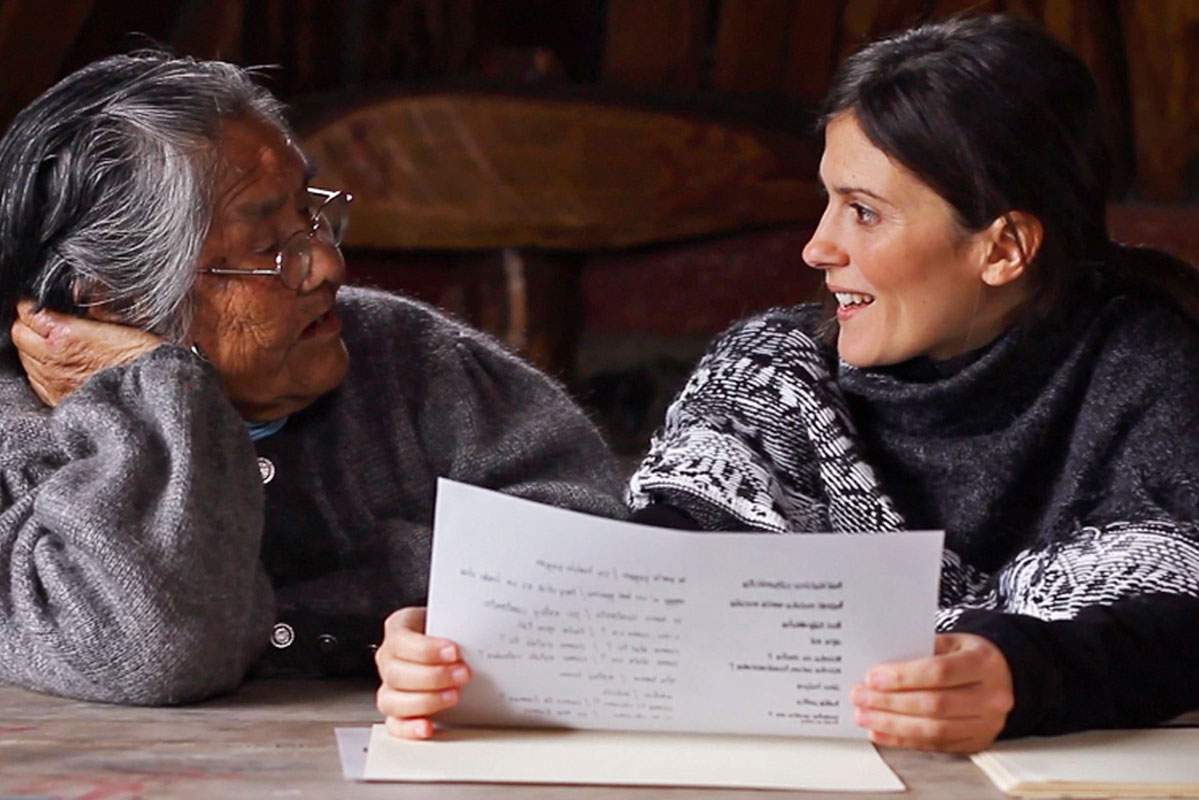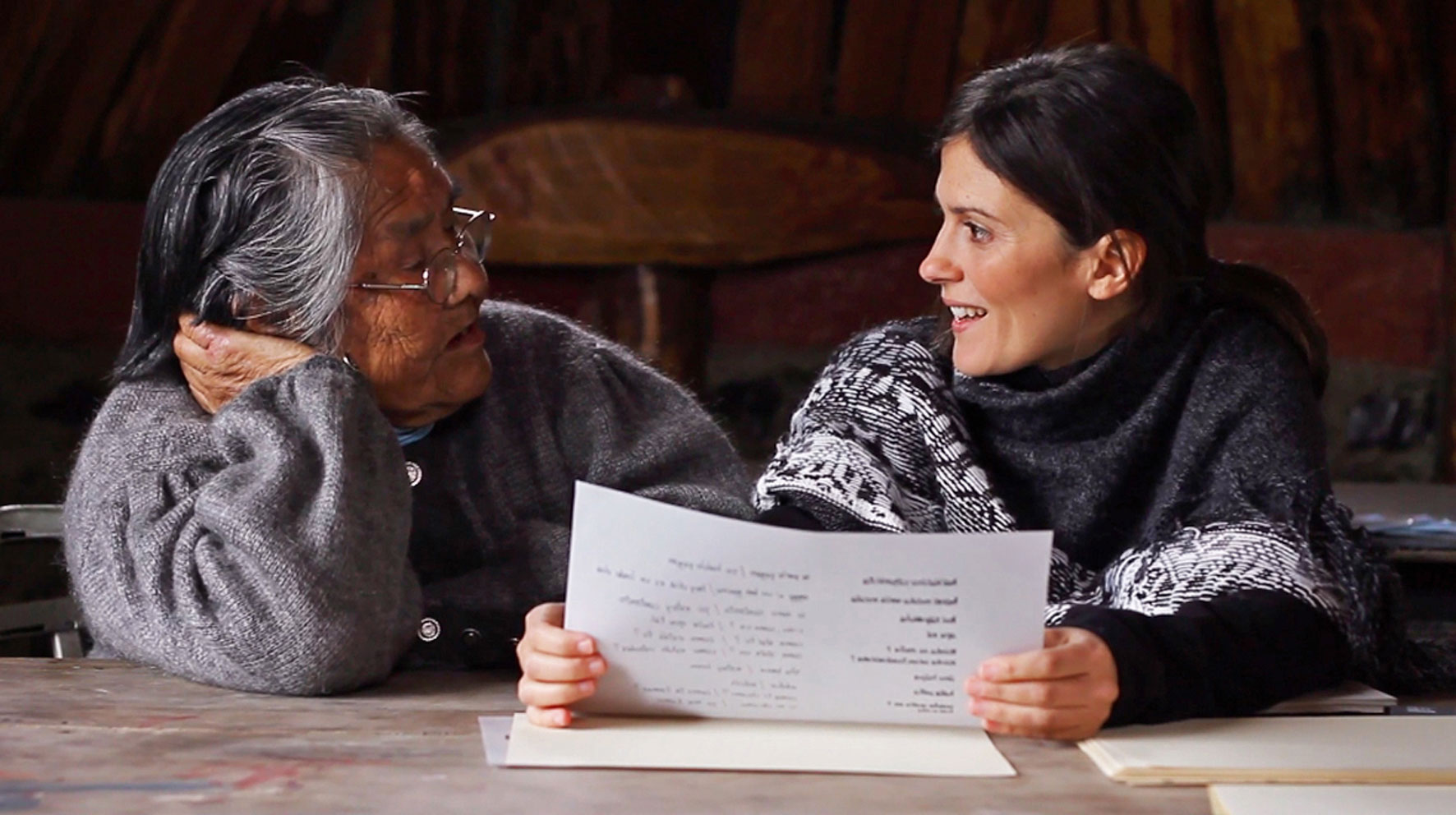HALA YELLA addio/adiós
2013
Video Full HD, 9’55’’
22 Kipa, disegni a china, 35x45cm
Il progetto HALA YELLA adiós/addio nasce da un’esperienza che ho vissuto a Capo Horn per circa 3 mesi, a cavallo tra la fine del 2012 e l’inizio del 2013. In questo periodo mi sono spinta in uno dei punti più estremi dell’America Latina, al Sur – esattamente nella Patagonia cilena, nell’Antartide meridionale – alla ricerca dell’abuela Cristina Calderon.
Sono giunta in questa zona estrema del mondo per incontrare l’ultima superstite di una stirpe molto antica: gli Yaghan, popolazione nativa dello stretto di Magellano. Ho passato due mesi alla Biblioteca Nacional di Santiago del Cile per studiare i testi dei padri gesuiti e trovare le tracce di quest’idioma antichissimo e produrre un abbecedario illustrato.
Dopodiché, mi sono imbarcata con una nave cargo e in circa 58 ore di navigazione ho raggiunto el fin del mundo: la isla Navarino, ovvero Capo Horn, per incontrare questa donna – dichiarata patrimonio dell’Unesco nel 2006 – che parla lo yaghan. Con il progetto HALA YELLA adiós/addio il mio tentativo è stato quello di preservare e tramandare una testimonianza di vita dalla “fine del mondo”.
Una videoinstallazione documenta il dialogo con l’Altro. Questa investigazione non voleva interpretare la cultura altrui, ma piuttosto testimoniare l’incontro con “l’alterità radicale”, come la definirebbe Emmanuel Lévinas.
Link: HALA YELLA addio/adiós
HALA YELLA addio/adiós
2013
Full HD Video, 9’55’’
22 Kipa, ink drawings, 35×45 cm
The project HALA YELLA addiós/addio was born from an experience I lived at Cape Horn for about 3 months, at the turn of the end of 2012 and the beginning of 2013. During this time, I ventured to one of the most extreme points of Latin America, to the South – precisely in the Chilean Patagonia, in the Southern Antarctic – in search of abuela Cristina Calderon.
I arrived in this extreme part of the world to meet the last surviving member of a very ancient lineage: the Yaghan, an indigenous people of the Strait of Magellan. I spent two months at the Biblioteca Nacional in Santiago de Chile studying the texts of the Jesuit fathers and searching for traces of this ancient language, producing an illustrated alphabet.
Afterward, I boarded a cargo ship, and in about 58 hours of navigation, I reached the “end of the world”: Navarino Island, Cape Horn, to meet this woman – declared UNESCO heritage in 2006 – who speaks Yaghan. With the project HALA YELLA addiós/addio, my attempt was to preserve and pass on a testimony of life from the “end of the world.”
A video installation documents the dialogue with the Other. This investigation was not meant to interpret the other’s culture but rather to witness the encounter with “radical otherness,” as Emmanuel Lévinas would define it.


